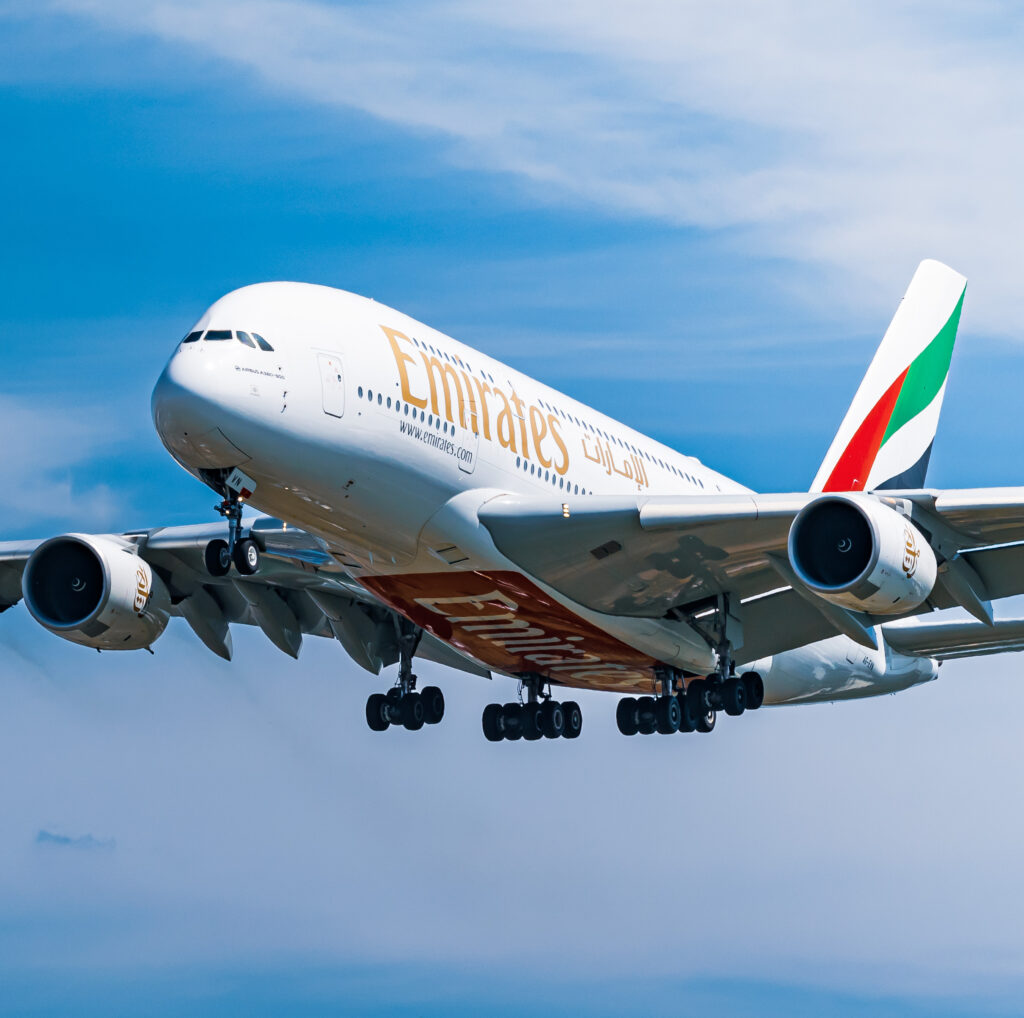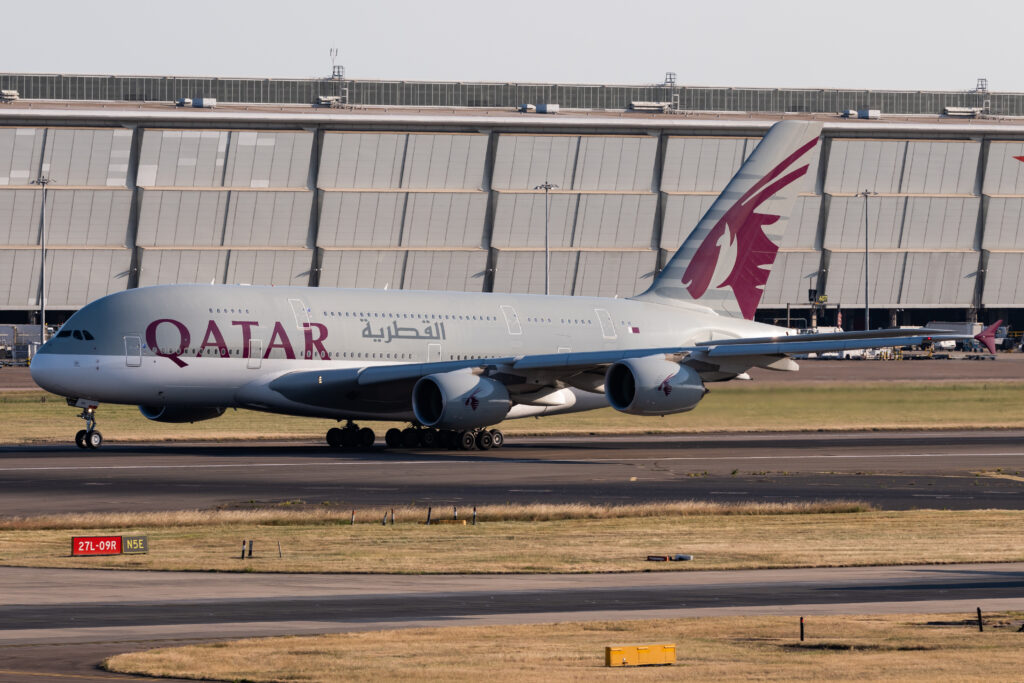LONDON – From what was spawned as an idea to break the Boeing monopoly on large aircraft in the late eighties, but only began production early into the new millennium.
Sitting here writing about an aircraft that is no longer in production underlines just how short a life the giant of the skies has had.
Compare it to its smaller but older sibling, the A320 which was launched in 1984 and still goes strong today as one of the main breadwinners for many airlines across the world.
The Beginnings

An announcement at the 1990 Farnborough Airshow laid the foundations for the four companies that formally made up what we know as Airbus commercial aircraft to be today.
The next ten years would consist of the company’s brightest brains designing, thinking, and ripping up ideas whilst undergoing the consideration process for what a new large commercial airliner would look like.
When the Airbus leadership team gave the green light for the project to begin in late 2000, what had commonly been designated as the A3XX, became the Airbus A380.
A fund of 9.5 billion euros had been put aside for development costs, but a further 1.5 billion was needed just four years later.
Amid spiraling development costs, we can forgive Airbus for treating it as an ‘all in’ situation and needing to see it out through to the end.
There were also a number of ‘Refundable advances’ and loans totaling nearly ten billion euros from the three governments of France, Germany, and the United Kingdom that all contributed to the development of the jet.
Some analysts predict that the overall costs could have reached a nosebleed-inducing 30 billion euros.
With two full-length decks for passenger seating and enough space for up to 853 passengers in a one-class configuration, Airbus thought they had to key to solving the airport congestion puzzle at the time.
Flying hub to hub and having people make connections from there would reduce the amount of smaller planes needed at gates.
Testing & Certification

Reflecting what we know of Airbus to be a European entity, different parts of the aircraft were selected to be built at different plants across the continent.
Broughton plant in the UK was in charge of building the wings.
Rear fuselage sections were assigned to Hamburg in Germany, the front and middle fuselage sections in Saint Nazaire, France, and the horizontal tailplane in Cadiz, Spain.
23rd January 2002 brought the first manufacturing processes of the wing box components. and just three years later, five aircraft had been built for testing.
Starting in 2005 and running through 2006 the aircraft underwent numerous rigorous tests that included: hot and cold weather and high altitude airport testing and transatlantic testing.
During February 2006 its wings failed destructive testing, falling short by just 5%, and needed thirty additional kilograms added to increase the wing box’s strength.
In March 2006, after passing evacuation testing, the beast received its EASA and FAA approval to be able to carry up to 853 passengers.
Full aircraft-type certificates were granted during a ceremony at its Toulouse Headquarters the following December.
Working life

After the obligatory delays that are synonymous with the manufacture and introduction of a brand new aircraft, the first airline to take delivery of the superjumbo were Singapore Airlines after an unplanned 6-month pushback caused by problems internally with the different Airbus plants using software versions that wreaked havoc when attempting to implement change in relation to electrical wiring looms.
When it eventually arrived, SIA took delivery of registration 9V-SKA (MSN003) on October 15th, 2007. 10 days later saw its first commercial flight take place between Singapore and Sydney that auctioned seats off to bidders in the name of charity.
Its entry into service was commended and somewhat surprised operators, with fuel economy being cited as one of the biggest plus points after only a couple of months.
It has been well documented throughout its lifespan that the Middle Eastern Airline Emirates was the biggest customer of the jet, taking 123 of the 251 that were ever produced.
Due to Emirates’ philosophy that utilizes the aforementioned ‘hub-to-hub’ model.
Dubai international forecasts to see over 64 million people through its airport in 2022.
Even with the A380 being retired by some airlines, a large percentage of these people will arrive in the gulf via the aircraft due to Emirates’ operational strategy.
However, it was not all smooth sailing. Early in January 2012, 20 of the aircraft were issued an airworthiness directive as a result of cracks being found in the wings.
They were discovered during the aftermath of inspections that occurred on a Qantas flight between Singapore and Sydney.
The wing cracks were unrelated to the engine fan blade incident that forced the aircraft into an emergency landing but preceded to ground the other 6 A380s Qantas had in service.
The repairs of these wing cracks reportedly cost the manufacturer upwards of two hundred million dollars and thousands of man hours sending mechanics around the world to rectify the issues.
False Starts

Among all the talk of the Airbus A380 not ‘taking off’ as expected in the industry as Airbus had envisioned.
During its lifetime there were a number of concepts proposed that didn’t gain much traction.
A freighter version that would have the second largest capacity of its aircraft type in the world came up short to only the Ukrainian-made outsized freighter, the Antonov An-225 Mriya.
The freighter variant actually brought in 27 orders but was later canceled or converted due to production delays and outright suspension of the freighter version.
With plans for the freighter on ice, both neo and plus variants saw research and design money pumped into them.
The neo, as we have come to know from the 380’s smaller siblings, is basically an engine upgrade. It stands for ‘New Engine Option’ and would have improved fuel efficiency by 15% along with better aerodynamics.
The A380neo would have also offered fifty additional seats on board.
2 years on from the talk of an A380neo, the A380plus was unveiled at Paris Air Show.
This would bring lower costs per seat, more seats onboard, and modifications to the wings such as winglets that improve fuel economy.
Even with the promise of more seats, improved fuel economy, and greater maximum takeoff weights, neither of the above variants ever made it to the production stage.
Beginning of the end

After what is considered in the aviation world as only a short working life, the same aircraft that Singapore Airlines took delivery of on October 15th, 2007, was sent to storage in June 2017.
It would never fly commercially again before being scrapped in 2019 and turned into aviation memorabilia by a German upcycling firm.
Although the early retirement of MSN 003 was not the outright end for the aircraft, Valentine’s Day in 2019 brought the announcement some had feared for months.
Emirates president Tim Clark announced that they had canceled orders for 39 A380s and instead replaced these orders with commitments for 40 A330 neos and 30 A350s.
This final dagger into the chest of the giant, and the fact that Airbus was struggling to secure orders as airlines opted for more fuel-efficient, two-engined aircraft rather than four, ultimately brought on this announcement from the CEO Tom Enders at the time:
“We have no substantial A380 backlog and hence no basis to sustain production, despite all our sales efforts with other airlines in recent years.”
With this, Airbus had 17 further A380s to complete the building prior to delivery (3 for ANA, 14 for Emirates).
The final wings departed Broughton on the specialized delivery vessel the ‘Dee River Craft’, which began its month-long, multi-vehicle journey down to Toulouse on 6th February 2020.
Post-final assembly, MSN 272 was delivered to Emirates on Thursday 16th December 2021.
This would prove to be the last Airbus A380 to be delivered as production wrapped up in the factories around Europe.
Present Day

According to CNN, 238 of the 251 jets remain available for service or are actively flying.
The giant has seen somewhat of a resurgence in a post-Covid world. Airlines such as Qantas have recently brought theirs out of storage and are in the process of dusting off the cobwebs and plan to get them back into service.
Qantas has 12 A380s, five are in operation, three are in hand undergoing maintenance prior to flying again, and the other four are parked in the California desert awaiting their fate.
On top of this, the chief operator of the 380, Emirates is in the midst of a full multi-billion-dollar retrofit of 67 of its aircraft that will include a never-before-seen premium economy cabin and refurbishment of its existing first class, business, and economy seats.
Among other interior upgrades such as new staircases, carpets, and interior paneling.
This is the aircraft we now know today as the one with showers in first class and individual cubicles in some of the most luxurious cabins we have ever seen on commercial jets.
Utilized by fourteen customers but only really loved by Emirates.
Passengers, for the most part, can’t speak highly enough of traveling on one, myself included.
I would tailor journeys around being able to fly on the 380 if the route had one scheduled due to the hospitality its size affords.
It’s so smooth considering it’s the biggest plane you will probably ever fly on; you wouldn’t expect it. A long-haul journey in economy feels so easy in comparison to smaller aircraft.
I was lucky enough to spend the first 8 years of my working life building the wings of this beast, but you only realize the magnitude of it when you are standing in the window at the airport ogling at what a feat of engineering it really is.
If you haven’t flown on one yet, I implore you to try to experience it before it is rendered completely extinct in the aviation industry.
For most airlines, it was a square peg in a round hole, and it really didn’t provide the performance that would demand further orders, which will undoubtedly underscore the short history of the Superjumbo.









